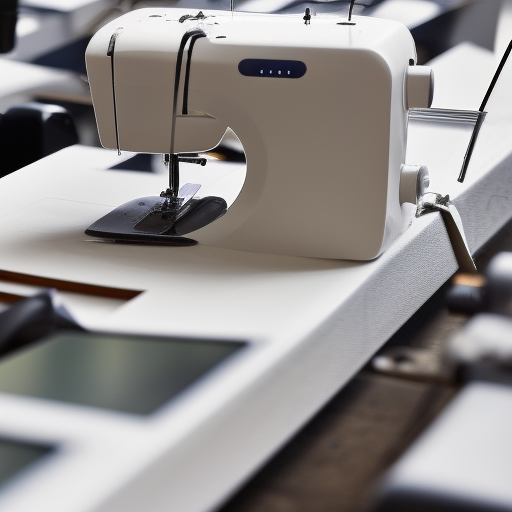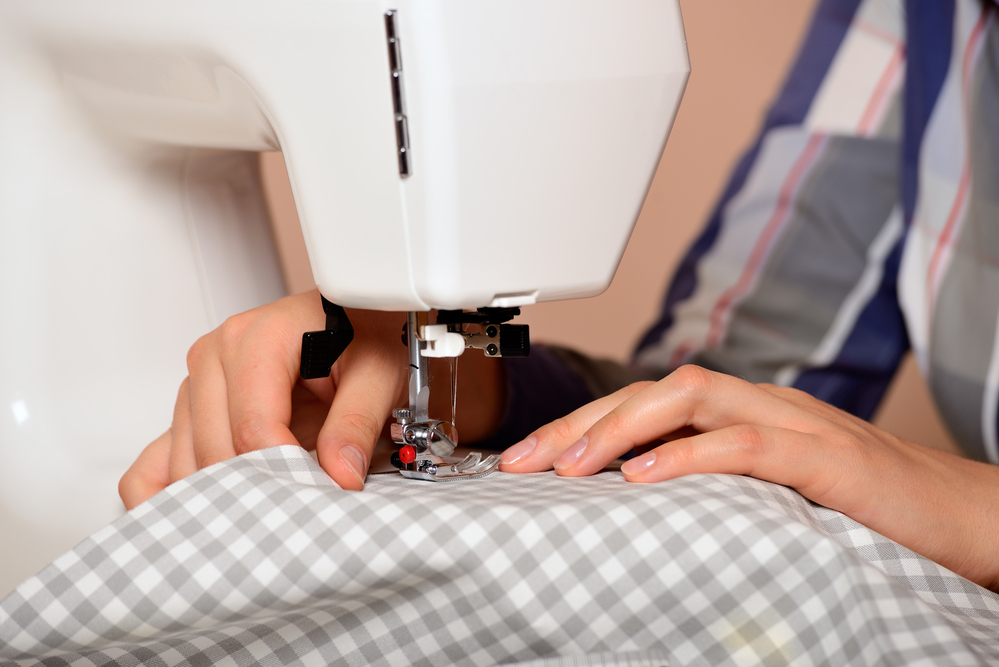Last Updated on February 9, 2023
Are you wondering how much electricity your sewing machine is using in the UK? Well, worry no more. We have all the answers here to help you understand just how much energy a sewing machine needs and what steps you can take to reduce its usage. From understanding power consumption of different models to calculating your own electricity bill – we’ve got it covered. So let’s get started and find out just how much electricity does a sewing machine use in the UK.
Table of Contents:
- Sewing Machines and Electricity Usage in the UK
- Understanding Your Sewing Machine’s Power Consumption
- Calculating Your Sewing Machine’s Electricity Usage
- Tips for Reducing Your Sewing Machine’s Electricity Usage
- Conclusion
Sewing Machines and Electricity Usage in the UK
Sewing machines are a great way to get creative and make your own clothes, accessories, and home décor. But how much electricity do they use? In the UK, sewing machines can vary in their energy consumption depending on the type of machine you have.
Electric Sewing Machines
Electric sewing machines typically consume between 0.1kWh and 1kWh per hour when in use. This means that if you run an electric machine for 10 hours a week, it will cost around £2-£3 annually in electricity bills. However, this figure could be higher or lower depending on the model of your machine, as some models may require more power than others to operate efficiently.
Mechanical Sewing Machines
Mechanical sewing machines usually consume less energy than electric ones as they don’t need any extra power to work properly. The average mechanical machine consumes around 0.05 kWh per hour when being used, so running one for 10 hours a week would only cost around £1 annually in electricity bills – significantly cheaper than an electric version.
Computerised Sewing Machines
Computerised sewing machines are becoming increasingly popular due to their ability to create intricate designs with ease, but they also tend to be quite expensive compared to other types of machines. These models typically consume between 0.5kWh and 2kWh per hour when in use, which means that running one for 10 hours a week could cost up to £6 annually in electricity bills – making them far more costly than either electric or mechanical versions.
Overall, it is important to consider the energy consumption of your chosen sewing machine before purchasing it, as this can have an impact on both your budget and the environment in the long run.
Sewing machines are a popular tool for home-based craftspeople, hobbyists, and professionals alike. But how much electricity do they use? In the UK, sewing machines vary in their power consumption depending on the type of machine you have.

Mechanical sewing machines typically consume less energy than electronic models. This is because mechanical models rely on the manual operation to move the needle and fabric through the machine’s feed dogs. Electronic models require more energy as they are powered by an electric motor which drives all of its functions, such as thread tension control and stitch length adjustment.
The amount of electricity used also depends on how often you use your machine; if it’s only used occasionally, then it will likely consume less energy than one that is regularly used for long periods at a time. Generally speaking, most modern sewing machines will draw between 50-100 watts when running at full speed or during peak usage times, like when stitching multiple layers of thick fabric together or using decorative stitches with heavier threads.
Understanding Your Sewing Machine’s Power Consumption
But did you know that your sewing machine can also be an energy guzzler? It’s important to understand how much electricity your sewing machine is using so you can make sure you’re not overspending on energy bills.
The first step in understanding your sewing machine’s power consumption is reading the labels. Most modern machines will have a label indicating their wattage or amperage rating. This number indicates how much electricity the motor needs to run properly. If you don’t see this information on the label, check with the manufacturer for more details about your specific model of sewing machine.
Next, calculate how many hours per day your sewing machine runs by multiplying its wattage or amperage rating by the number of hours it runs each day (e.g., if it has a 1-amp rating and runs for 3 hours per day, then multiply 1 x 3 = 3 amps). This will give you an idea of how much electricity your sewing machine uses every day.
Finally, multiply this daily usage figure by 365 days in a year to get an estimate of annual power consumption from your device (e.g., if it has a 3-amp rating and runs for three hours per day, then multiply 3 x 365 = 1095 amps). Knowing this figure helps inform decisions around whether or not investing in more efficient models makes sense financially as well as environmentally speaking.
By understanding the power consumption of your sewing machine, you can better estimate how much electricity it will use and plan accordingly. Now let’s look at calculating the exact amount of electricity used by your sewing machine.
Calculating Your Sewing Machine’s Electricity Usage
Calculating your sewing machine’s electricity usage is an important part of understanding how much energy you’re using when running your machine. Knowing the wattage rating of your sewing machine can help you determine its power consumption and estimate how much it will cost to run over time.
To calculate the wattage rating of a sewing machine, start by finding out what type of motor it has. Most modern machines have either a universal or servo motor, both of which are rated in watts (W). The wattage rating should be printed on the label or manual that came with the machine. If not, contact the manufacturer for more information.

Once you know the wattage rating, use this formula to calculate how many kilowatt-hours (kWh) per month your sewing machine uses: Wattage Rating x Hours Used Per Month / 1000 = kWh/Month. For example, if you have a 500 W sewing machine and use it for 4 hours per day on average each month, then your monthly electricity usage would be 500 x 120 / 1000 = 60 kWh/month.
In addition to knowing how much electricity your sewing machine consumes each month, there are other factors that can affect its power consumption, such as voltage fluctuations and temperature changes in the room where it is used. To ensure accurate calculations and reduce energy costs associated with running a sewing machine over time, consider investing in surge protectors or using air conditioning systems to regulate temperature levels inside the workspace area where possible.
Tips for Reducing Your Sewing Machine’s Electricity Usage
But they can also be a big energy drain if you’re not careful. If you want to reduce the amount of electricity your sewing machine uses, here are some tips:
1. Use a power strip – Plugging your sewing machine into a power strip will allow you to easily turn it off when not in use. This will prevent it from drawing any unnecessary electricity while idle.
2. Unplug when not in use – Another easy way to save on electricity is to unplug the machine after each use or whenever it won’t be used for an extended period of time (such as overnight). This simple step can help reduce energy consumption significantly over time.
3. Choose an efficient model – When shopping for a new sewing machine, look for one that has been rated as energy-efficient by Energy Star or another reputable organization such as Good Housekeeping magazine or Consumer Reports magazine. These models typically have lower operating costs than standard models and may even qualify for rebates or tax credits in some areas.
4. Turn off lights and fans – Turning off any lights and fans near the sewing area will help keep temperatures down so that the motor doesn’t have to work harder than necessary which can lead to higher electricity usage over time. Additionally, this helps conserve resources like water since many cooling systems rely on water circulation too.
Keeping dust away from electrical components helps ensure proper airflow around them, allowing them to run more efficiently without having their motors strain unnecessarily due to blockages caused by dirt buildup. To do this, regularly clean out lint traps, vacuum around cords and wipe down surfaces with damp cloths. This will help conserve resources like water since many cooling systems rely on water circulation too.
Conclusion
In conclusion, understanding how much electricity a sewing machine uses in the UK is an important part of being a responsible consumer. By taking the time to understand your own sewing machine’s power consumption and calculating its usage, you can make sure that you are using energy efficiently and responsibly. Additionally, by following some simple tips for reducing your sewing machine’s electricity usage, you can help reduce your overall energy costs while still enjoying all the benefits of owning a sewing machine. So next time someone asks, “How much electricity does a sewing machine use in the UK?” you’ll be able to answer with confidence.
Paul is the type of person who never met a problem he couldn’t fix. He can always be found tinkering with something in his house, even if it isn’t broken! His tips and tricks are often shared on our site. He’s the one you call when something breaks because he has been known to improvise fixes for everything from leaky faucets to malfunctioning dryers.

